Contact Details

The new MX7 ULTRA can manufacture large volumes of endmills and other cutting tools of the highest accuracy and quality. The minute size of a micron is beyond the human eye, but in becoming even more precise and moving from micrometers to nanometers, ANCA will offer the highest accuracy and quality in a cutting tool in the market. New software, hardware and design features are combined to make significant advances in surface finish, accuracy, and controlled runout, to deliver batch consistency from the first ground tool to the thousandth.
The MX7 ULTRA includes:
- nanometer control system,
- new servo control algorithm for smooth motion,
- system and mechanical upgrades enhance stiffness and rigidity,
- in-process measuring, balancing and runout compensation for consistent accuracy,
- Motor Temperature Control (MTC) – compensation for thermal expansion on the grinding spindle, and
- specialist training support in how to grind industry leading cutting tools.
Pat Boland, ANCA co-founder says: “The MX7 ULTRA is a significant development in precision machine design and will change the industry expectations for accuracy and tool life. Achieving these outstanding results has only been possible because of our extensive experience working with customers to manufacture the highest quality cutting tools over many years. At ANCA we are always designing and innovating to find better customer solutions and I am very proud of the ANCA team that has developed the MX7 ULTRA.”
“The ULTRA machine is truly market changing. It is the culmination of ANCA’s elite technology, deep industry knowledge, and customer experience in grinding,” says Thomson Mathew, ANCA product manager for the MX series and software products.
Unlike its competitors, ANCA is vertically integrated. This provides a significant advantage as it means ANCA teams can develop and manufacture their own machines from base to canopy - including controls and drive systems, design and simulation software and even machine monitoring software. Owning all the technology means engineers and designers can consider the entire machine as a single system when developing new solutions.
“We wanted to create technology that could produce premium cutting tools that are above the current market standard in both accuracy and tool life. We introduced nanometer resolution into our axis, which is new to the cutting tool market. The result is a perfect example of ANCA’s vertical integration capabilities as we have the in-house ability to fine tune or develop the new algorithms for our drives to make this happen.”
“Cutting tools like ballnose, corner radius, barrel shape ballnose and double corner radius endmills are used widely across industries including diemold, aerospace, and power generation. The surface finish quality, accuracy and runout are critical for the performance and cutting life in all applications – so our customers want a guarantee that their first tool will be exactly the same as the hundredth, or thousandth. The MX7 ULTRA can produce high quality cutting tools to suit all customer needs to satisfy all industry types.”
“With almost 50 years of expertise, we are experts in the field of cutting tools and we want to impart our knowledge through best grinding practices. As part of the ULTRA experience, skilled application engineers will be available to train and educate our customers to ensure the machine will produce high quality tools from the first day of production.”
“It has taken years of research and development, and engineering excellence for us to develop this premium solution to grind high quality tools. In my 25 years in the industry, I believe this is one of the most outstanding innovations we have accomplished that will really change the cutting tool market. We are confident that our customers will be very satisfied with the life and performance of cutting tools produced on this premium machine,” Thomson concluded.
The MX7 ULTRA superior performance highlights
Greater control for the velocity and acceleration or deceleration along with machine jerk limits: To increase the stiffness of the C-axis, the MX7 ULTRA combines developments to the nanometer or micro degree resolution in the linear and rotary axis, tuning parameters, several system enhancements, and major mechanical changes.
ULTRA-fast response to internal or external disturbances: ANCA’s newly designed servo control algorithm allows silky smooth motion of an axis with the use of a unique algorithm and nanometer measurement in the control system. This will create finer cutting edges and eliminating micro-chips making it more efficient while used in actual machining of materials.
Better cycle time and higher productivity of high-quality cutting tools: The unique algorithm is key to the performance of the machine and ensures outstanding tracking performance. It also allows ULTRA-performance of the servo system without using a complex, complicated, or expensive mechanical system.
Reduces setup times and scrap: Cutting-edge software has been developed by ANCA to ensure batch consistency in large volumes. LaserUltra is part of the MX7 ULTRA package to maintain consistency and accuracy of the grinding process which includes in-process measurement and compensation to accommodate wheel wear and other external variations during large batch grinding. Its analog capability can maintain less than +/- 0.002mm line form accuracy of any profile which includes ballnose and corner radius tools.
Increased wheel life and better-quality tools: Tool and wheel performance can be further optimized by the iBalance software, which guides a user to the optimal grinding position and RPM for vibration monitoring and balancing the wheelpack inside the machine. Correctly balanced wheelpacks result in superior surface finish and reduced wheel wear due to the elimination of wheel vibration.
Consistency in finished tool quality: A major inclusion in the MX7 ULTRA package is the total tool runout measurement and compensation operation in iGrind. When an endmill is in rotation it is important that each tooth hits at the exact same spot along the workpiece for longer tool life and efficient cutting. Every tool in the batch can be measured and compensated for runout to make sure the entire batch is within a tolerance of 0.002mm. It is another piece of assurance that the first endmill will be as good as the last.
Consistent spindle thermal stability: Motor Temperature Control (MTC) is a patented (US PAT. 11,394,331) innovation built into the motor spindle drive firmware. Smart control algorithm actively manages and maintains the temperature of motorized spindles in the MX7 ULTRA. Dramatically reduced machine warmup time means production can start sooner, once the machine has reached thermal stability. This improves productivity and machine use. Consistent thermal stability of the spindle over time regardless of changes in load or speed, or coolant temperature, greatly improves the dimensional stability of grinding results.
Post grinding processes: The smoother, finer cutting edge and surface finish as a result of the combination of all the above including the nanometer control will assist in all post grinding applications like edge preparation and coating. A finer edge that has been properly prepared has greater stability, which reduces the likelihood of it chipping, while also decreasing surface roughness which can cause increased friction between the tool and the workpiece.
Related Glossary Terms
- coolant
coolant
Fluid that reduces temperature buildup at the tool/workpiece interface during machining. Normally takes the form of a liquid such as soluble or chemical mixtures (semisynthetic, synthetic) but can be pressurized air or other gas. Because of water’s ability to absorb great quantities of heat, it is widely used as a coolant and vehicle for various cutting compounds, with the water-to-compound ratio varying with the machining task. See cutting fluid; semisynthetic cutting fluid; soluble-oil cutting fluid; synthetic cutting fluid.
- edge preparation
edge preparation
Conditioning of the cutting edge, such as a honing or chamfering, to make it stronger and less susceptible to chipping. A chamfer is a bevel on the tool’s cutting edge; the angle is measured from the cutting face downward and generally varies from 25° to 45°. Honing is the process of rounding or blunting the cutting edge with abrasives, either manually or mechanically.
- endmill
endmill
Milling cutter held by its shank that cuts on its periphery and, if so configured, on its free end. Takes a variety of shapes (single- and double-end, roughing, ballnose and cup-end) and sizes (stub, medium, long and extra-long). Also comes with differing numbers of flutes.
- grinding
grinding
Machining operation in which material is removed from the workpiece by a powered abrasive wheel, stone, belt, paste, sheet, compound, slurry, etc. Takes various forms: surface grinding (creates flat and/or squared surfaces); cylindrical grinding (for external cylindrical and tapered shapes, fillets, undercuts, etc.); centerless grinding; chamfering; thread and form grinding; tool and cutter grinding; offhand grinding; lapping and polishing (grinding with extremely fine grits to create ultrasmooth surfaces); honing; and disc grinding.
- micron
micron
Measure of length that is equal to one-millionth of a meter.
- stiffness
stiffness
1. Ability of a material or part to resist elastic deflection. 2. The rate of stress with respect to strain; the greater the stress required to produce a given strain, the stiffer the material is said to be. See dynamic stiffness; static stiffness.
- tolerance
tolerance
Minimum and maximum amount a workpiece dimension is allowed to vary from a set standard and still be acceptable.



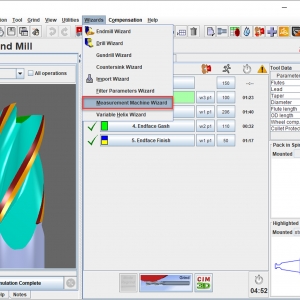

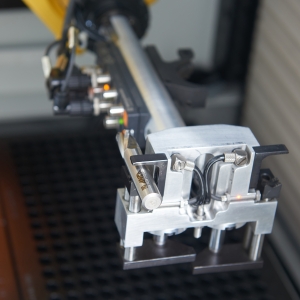
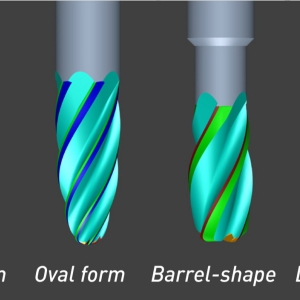
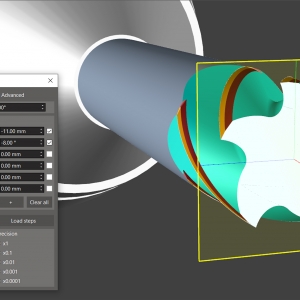
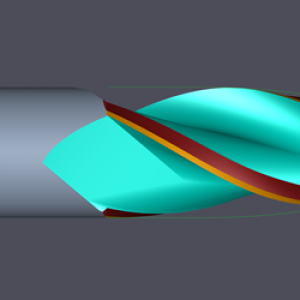
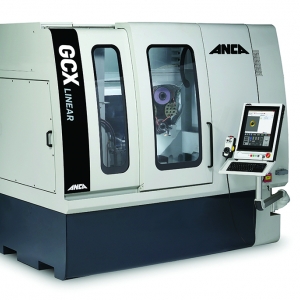
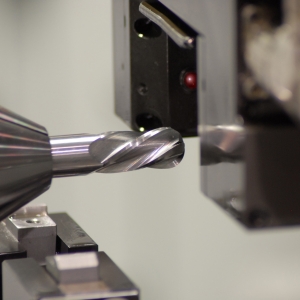
 PRODUCTS
PRODUCTS

